I’ve wittered quite a bit before about about my troubles with goblin hands and small knobs. In particular, plane handles.
Normally anything that trys to be a handle makes a rubbish handle, and as a rule the most un-restrictive handles make for the best. A wooden smoother for example doesn’t even have a handle, but in my opinion at least, it’s one of the most comfortable. Wooden jacks and trys are also very good for enduring tasks, despite their boxy looks, and this is because they give flexibility for slightly different positionings of your hands.
One style of plane that has always seemed like a bit of a dictator to me are the European horned planes. But this turned out to be another case of me being wrong.
The horned plane isn’t only very comfortable, but it has some advantages too.
Normally when we plane we have a power arm which pushes the plane (the engine), and a guide arm which directs and guides the plane (the steering). The latter also provides a bit of downwards force every now and then (the suspension). With the horned plane (with a bit of practice) you can also power the guide arm (four wheel drive) and this can give you immense power surges when required, or just take some of the load.
Of course you can do this with other types of plane, but this feels a lot more designed.
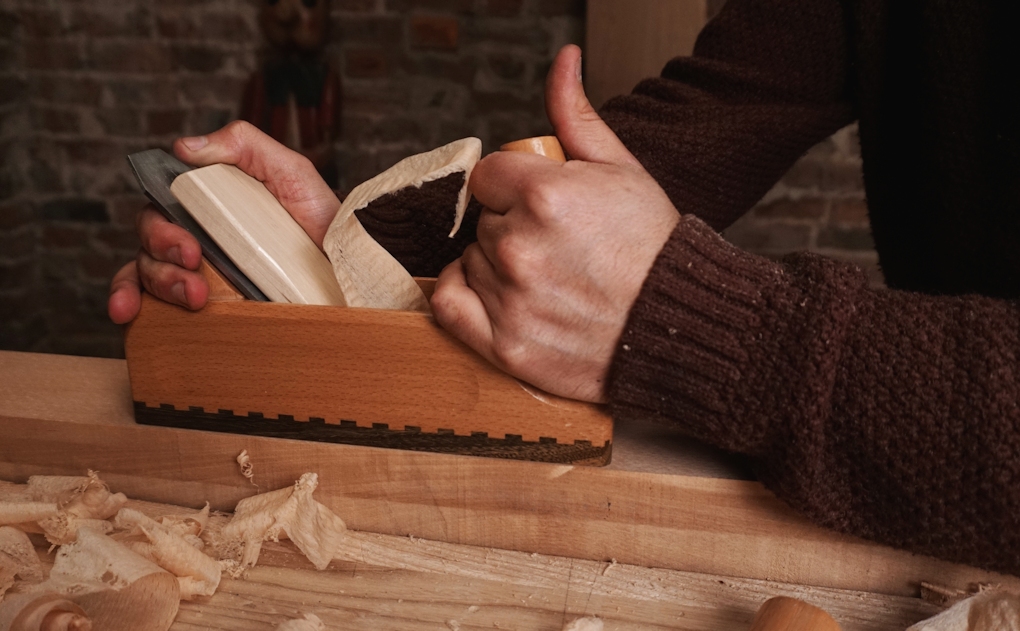
Turn the plane around and it feels just as good, and pulling a plane is a very under utilised technique.
The only negative is that this Dictator is such a dictator, that the bloody thing is handed (you have to specify if you’re a lefty or righty).
Despite the fact that you can only hold this plane the way it tells you to, there’s nothing about it that restricts you. Where your main power hand goes, at the back of the plane, it’s just a slightly more curved version of the English pattern smoother. The other hand gets a bent branch, that’s hardly affected by hand size.
It does look rather odd though… but my Stanley’s have a draw knob as a handle, and I’d call that normal.

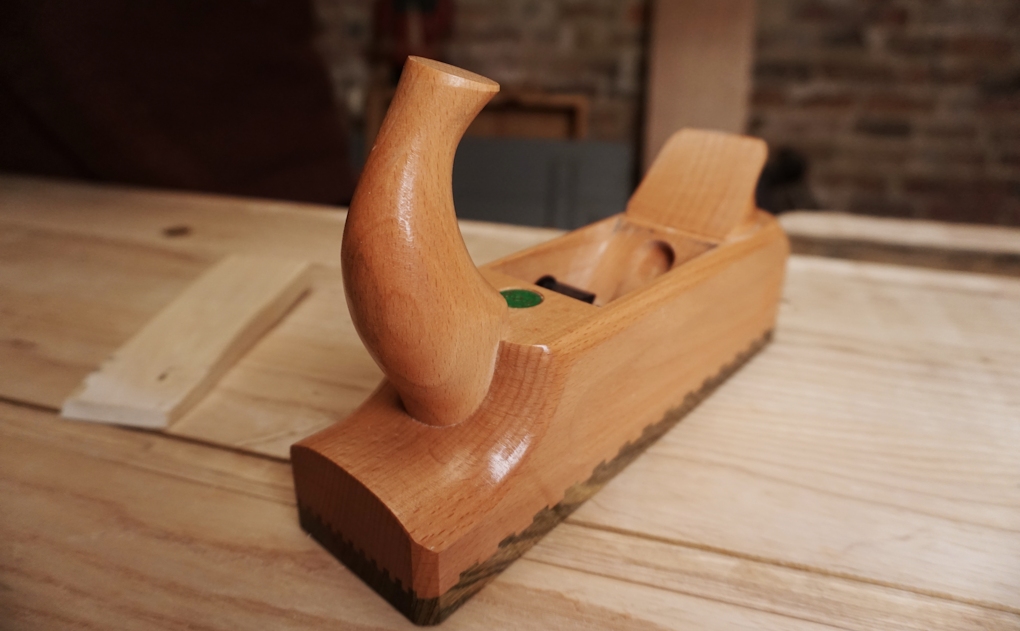
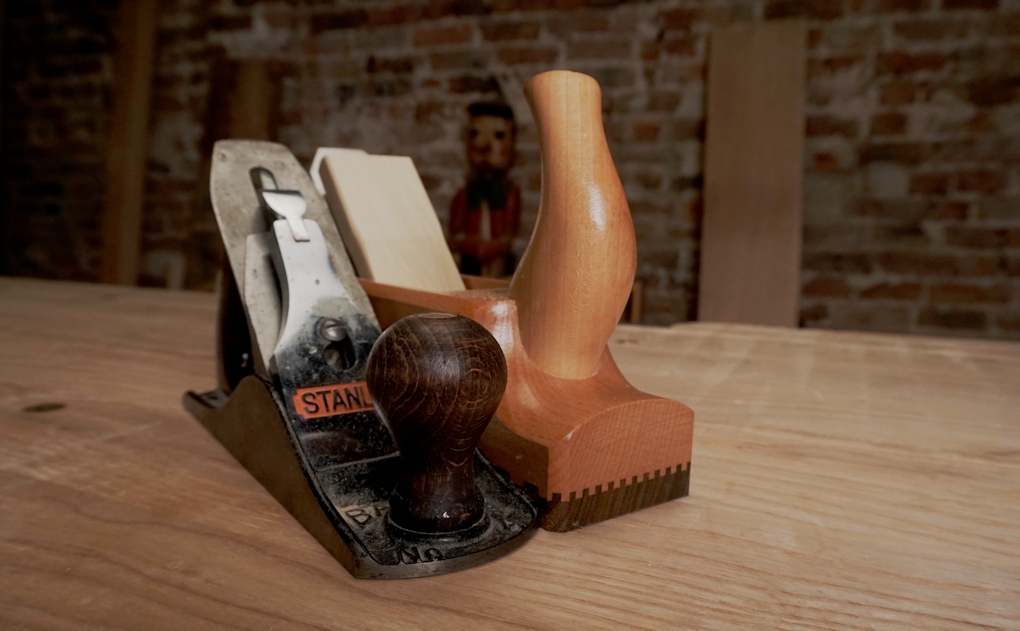
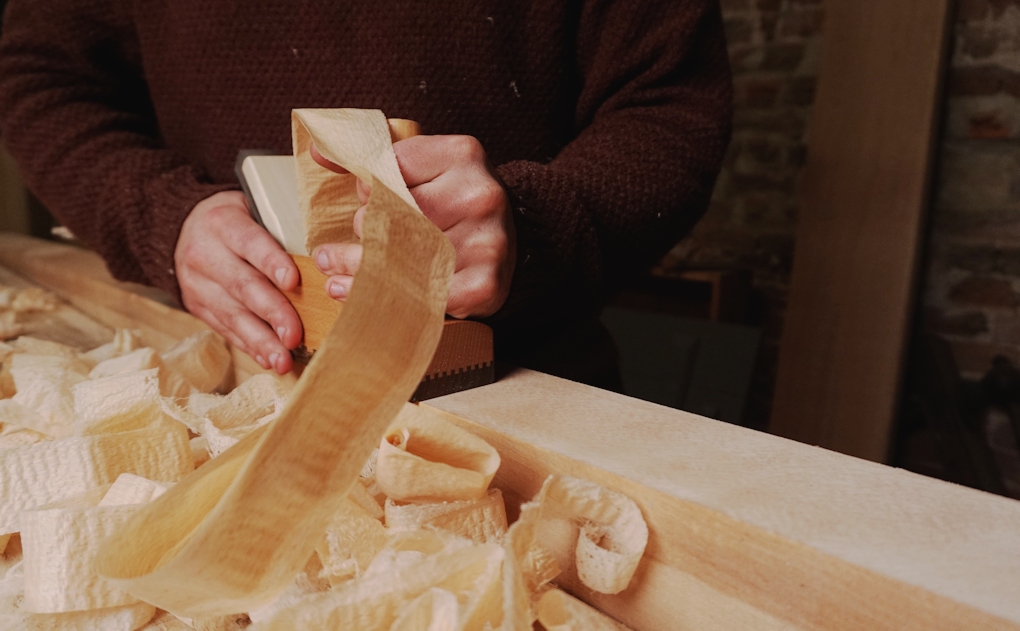
![Bench Top Edge Jointing [with Video]](https://www.theenglishwoodworker.com/wp-content/uploads/2022/10/bench-top-edge-jointing-video.jpg)
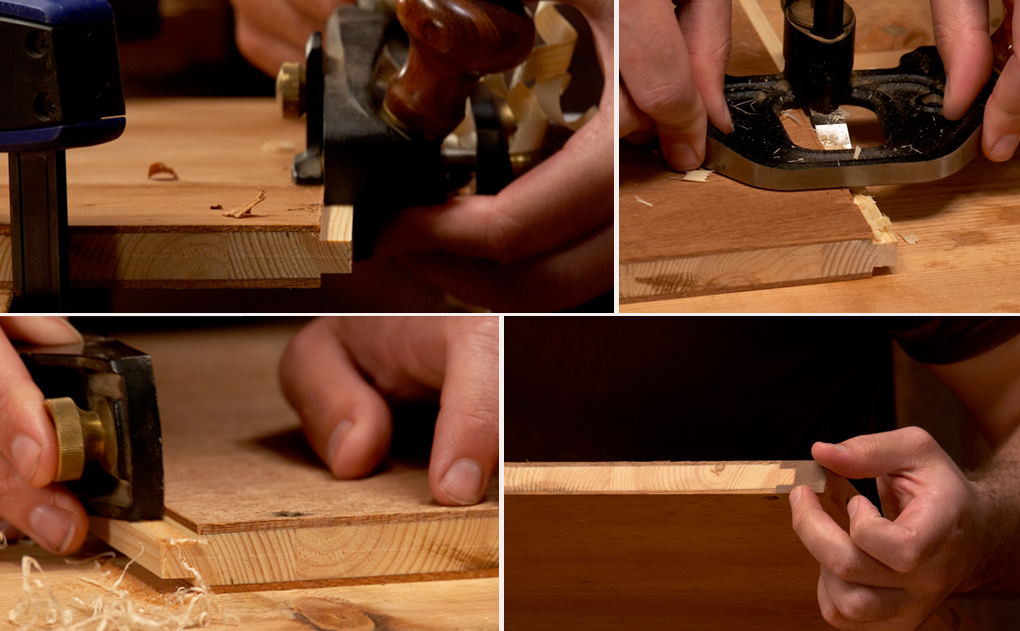
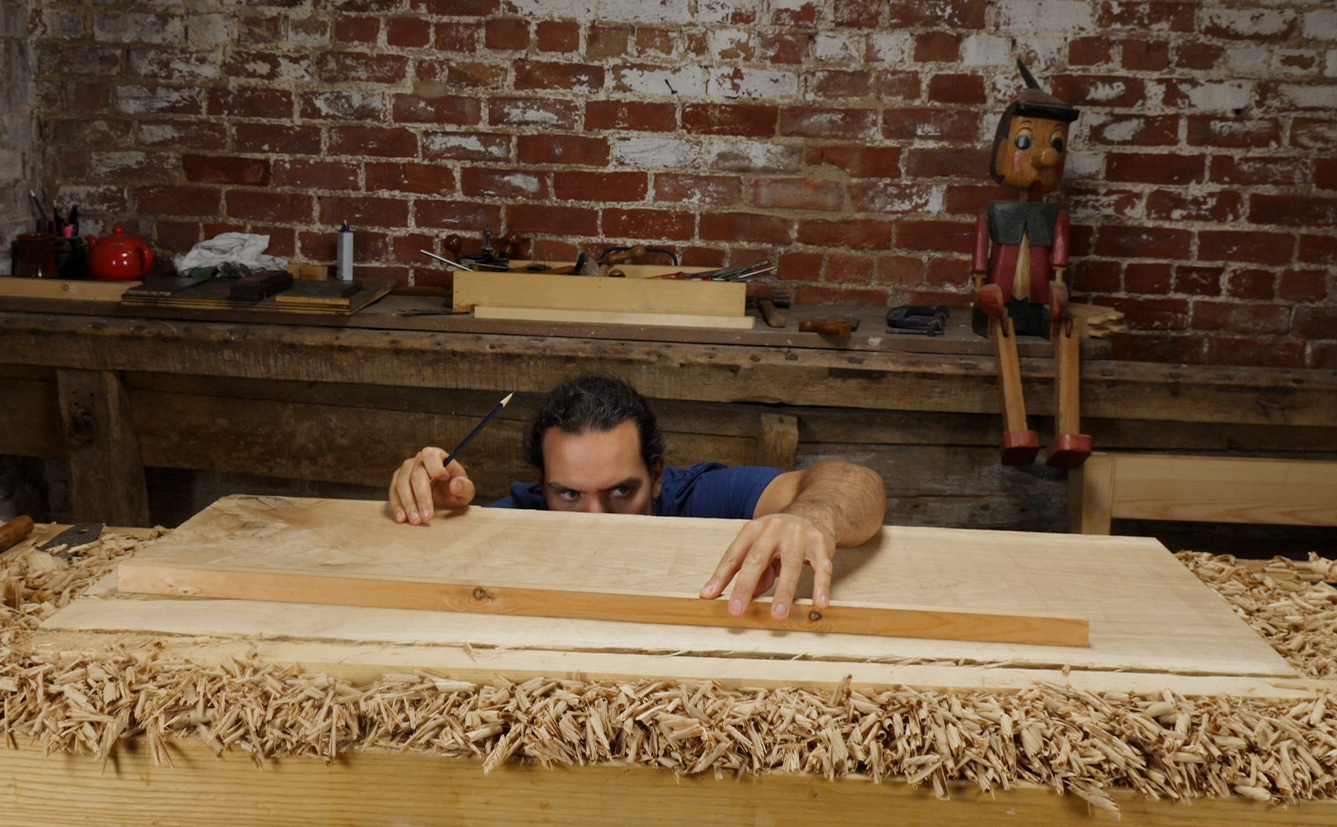
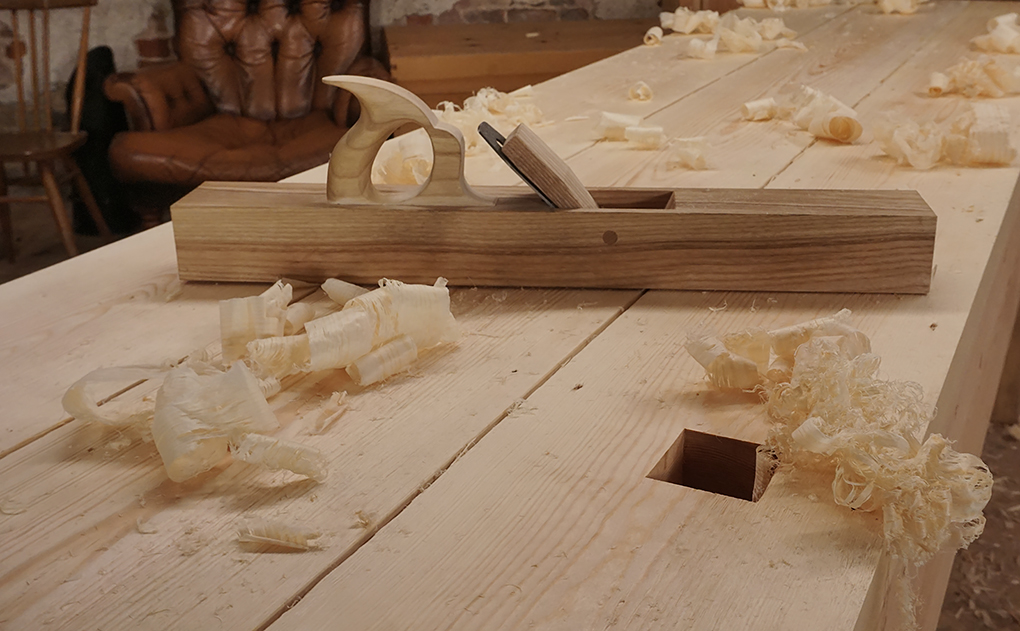
PLEASE – when is the “Making a Wooden Plane” video being made available?
All filmed and it’s being edited as we speak. We don’t have a date, but it won’t be too much longer.
We’ll add some peeks over on Instagram over the next week https://www.instagram.com/theenglishwoodworker/
Can’t Wait, thank you
I completely agree. Yet another reason why I prefer ECE planes over metal ones.
I have a ECE jack which must be 20 years old and, as I have previously posted, had a problem learning how to set the blade. With lots of practice and testing different hammers, I finally got it. I use mostly it for smoothing the wood and I pull much more than push as I can look down on the board just in front of the plane for much better control.
I love my Primus reformed smoother.
ECE planes are excellent. The screw-type adjustment on their smoothers and jacks requires some practice and patience to begin with, but it’s very precise when you get the hang of it.
I recall my grandfather calling German horn type handled planes ‘Bismarcks’. I guess he got it from his father who was a carpenter in the 1890s. Not strictly true as I found out later; ‘Bismarck ‘ planes referred to those which were specifically scrub planes but it cames to mean all horn-handled planes as time went on. Now it seems to have passed into history along with the Iron Chancellor.
….. I should say that this was a UK thing! Other countries may differ!
All best
Thank you for the reference, mine just showed up today!
I’ve been wanting to try out wooden planes as the good ones always seem to be very expensive and the cheaper ones I usually don’t hear good things about. Combine that with the fact that I’m comfortable with my old iron Stanley’s and I’ve never taken the plunge into “woodies”. After seeing your review on these I decided the price was right and given your endorsement I gave it a try.
I opened it, cleaned the blade with some mineral spirits, set the blade, grabbed a piece of walnut out of my scrap bin and gave it a go. As you mentioned, straight out of the box this plane took a nice shaving and left a clean surface on the wood.
https://photos.google.com/share/AF1QipMoUaCeqySI6VR_zS10c8EuUjXQh-dqhRDFYSrYgS4tkvFeJjrKscCyjcJtdfFXQg/photo/AF1QipMUs99MnMbFX6Hj52inDvnjhU6UcO4hlPrnc_Bx?key=Z2ZYaHZtbURDRTRDVl9oLVpSdXlySG1udEk0M0xR
I’m excited to see how this plane replaces my trusty 5 1/2 in the next few months.
Very Nice Review, I really liked it I have done bookmark this site. “Making a Wooden Plane” video being made available?
Nice to see also some talk about these german style wooden planes.
I’m a newbie to woodworking. So I bought an ECE Doppelhobel. On the one hand I am german and thought it was some traditional thing to do. On the other hand it was cheapier than the metal variety. :-p
And I really like the handling of it. Also, as you describe, the pulling to eg. quickly change direction in case the grain demands it. I also find the nameing scheme more helpful describing the actual use case of the plane instead of some weird number.
However, I have some trouble setting the plane. In general I tend to overshoot my adjustments. But after some trials I usually get it as intended. The trouble is, though, that iron tends to retract when I hit eg. a knot. Resetting starts again. Overshoot. Reset. Overshot. Reset. Hit Knot. Reset. Argh. At some point the miracle happens and the plane starts working like a charm. Even hitting a knot doesn’t affect the iron setting anymore. But I can’t tell what I did differently to make it work. Can anyone give me hint, what I’m doing wrong?
(Note: I got a plane as on the picture. With wooden wedge. Not the Primus-flavour with mechanical adjustment. If that wasn’t clear…)
With wooden wedges, it’s imporatnt that the wedge itself is in clean contact with the blade assembly for the full depth of the plane body – likewise the blade itself where it sits on the body of the plane.
A piece of grit or a high point on either may cause your problem.
You can check it by rubbing a very soft pencil on the metal of the blade where it is in contact with the wedge / plane body, then after assembling and setting as normal, take it apart and note where the graphite has deposited – this should identify any high spots.
Hope this helps.
I checked the backside of the wedge and found some burnished spot, which indicates a high spot there. However, neither pencil nor chalk worked to mark the high spots. It wouldn’t stick to the wedge, or rather sticked to the blade assembly and didn’t transfer.
I finally just showed the wedge to the assembly and found a bit of an arc to it. So I simply flattened the backside of the wedge with some sandpaper on the bench. Showing it again to the assembly indicated a much better fit. And indeed things work much better now. I’m not sure it is related, but the adjustment of the plane cut now works also much better.
Thanks for putting me on the right track! 😀
After writing my mini review of the ECE jointer I jumped over to the Highland Woodworking page to look at their wedged jack plane and I see that now ECE makes the jointer with a wedge! I’m going to get the wedged jack plane first, and then, if the tension rod and I haven’t become friends after a few months, I might have to sell the ‘b@$!@#d’ jointer and get the newer version with a wedge — or build my own — now that Richard’s wonderful videos have made it all so easy.
My comment/review of the ‘Primus’ style ECE jointer is in the comments to Richard’s full review post.